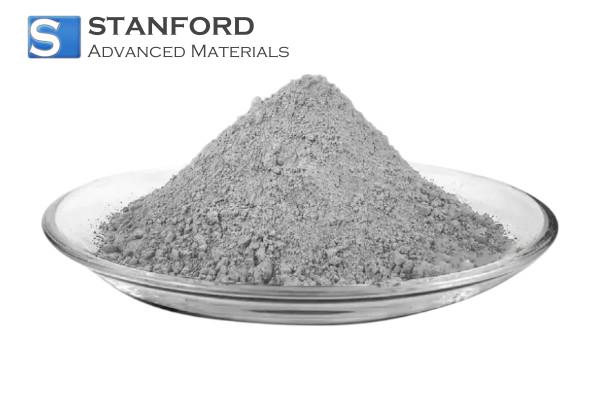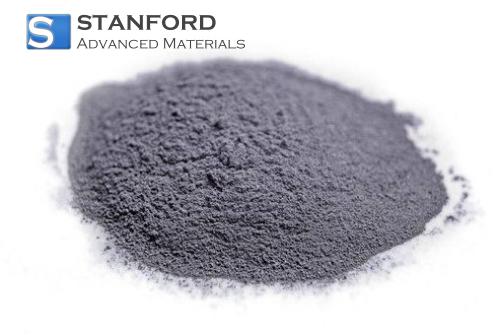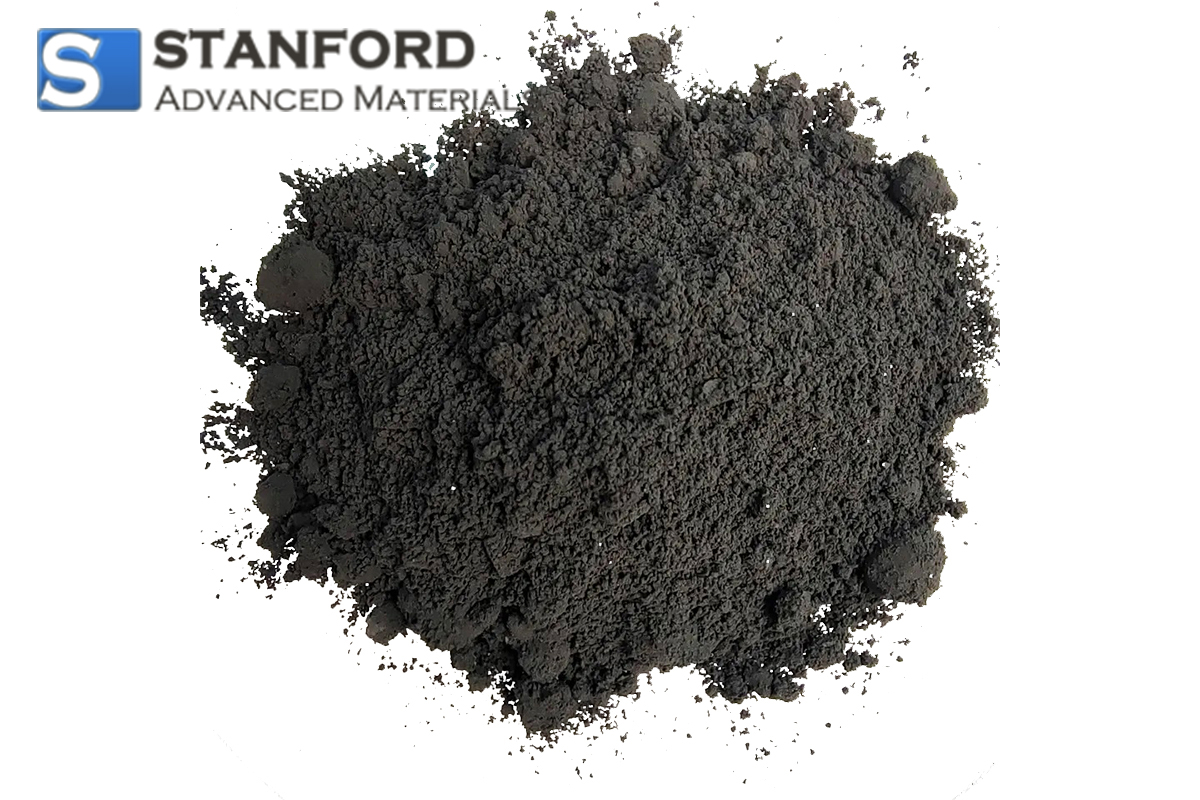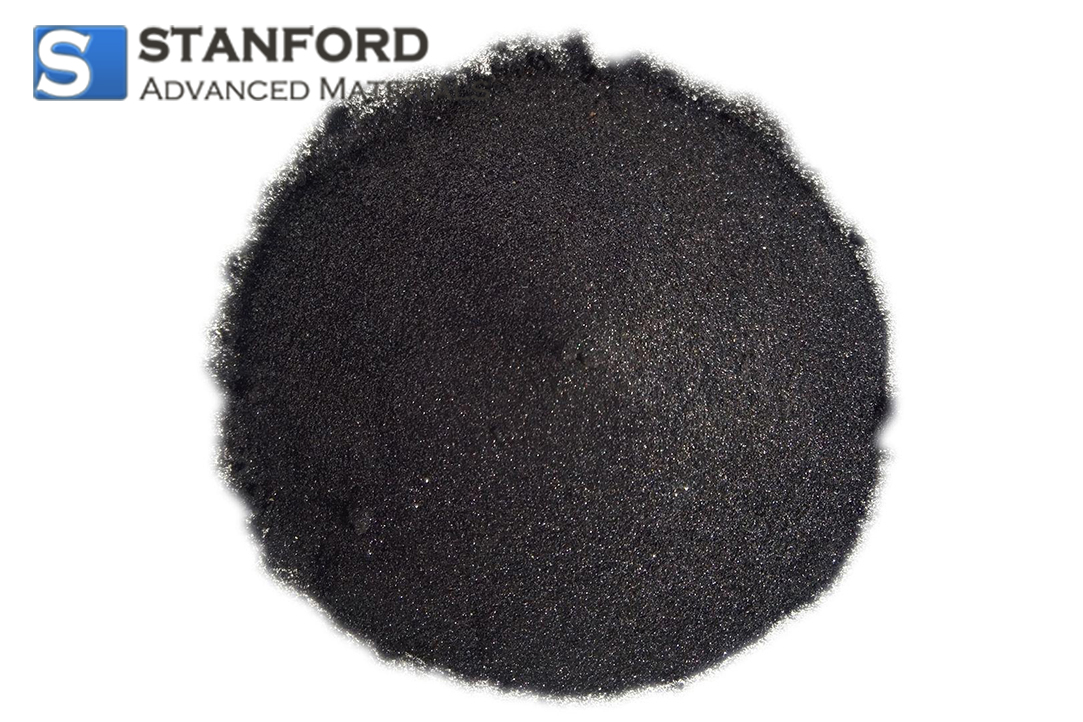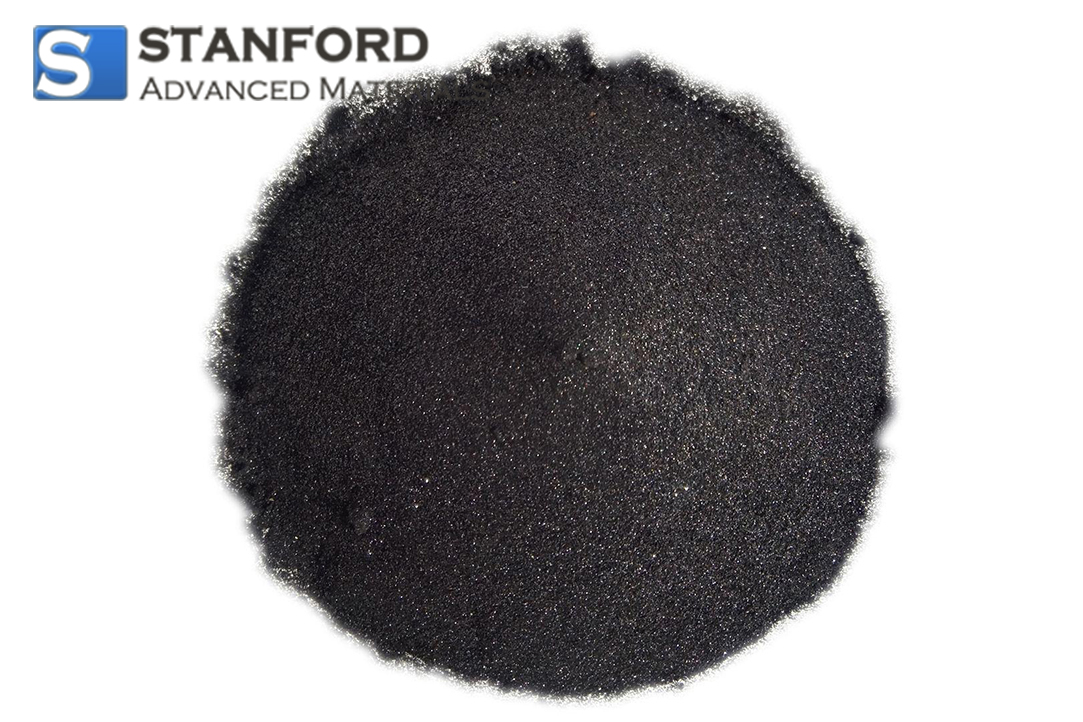SECTION 1. IDENTIFICATION
Product Name: Silicon Oxide Wafer
CAS #: 60676-86-0
Relevant identified uses of the substance: Scientific research and development
Supplier details:
Stanford Advanced Materials
E-mail: sales@samaterials.com
Tel: (949) 407-8904
Address: 23661 Birtcher Dr., Lake Forest, CA 92630 U.S.A.
SECTION 2. HAZARDS IDENTIFICATION
2.1 Classification of the substance or mixture
GHS Classification in accordance with 29 CFR 1910 (OSHA HCS)
Eye irritation (Category 2A), H319
Specific target organ toxicity - single exposure (Category 3), Respiratory system, H335
Specific target organ toxicity - repeated exposure, Inhalation (Category 2), Lungs, H373
2.2 GHS Label elements, including precautionary statements
Pictogram
Signal word Warning
Hazard statement(s)
H319 Causes serious eye irritation.
H335 May cause respiratory irritation.
H373 May cause damage to organs (Lungs) through prolonged or repeated exposure if inhaled.
Precautionary statement(s)
P260 Do not breathe dust/ fume/ gas/ mist/ Vapors/ spray.
P264 Wash skin thoroughly after handling.P271 Use only outdoors or in a well-ventilated area.
P280 Wear protective gloves/ eye protection/ face protection.
P304 + P340 IF INHALED: Remove victim to fresh air and keep at rest in a position comfortable for
breathing.
P305 + P351 + P338 IF IN EYES: Rinse cautiously with water for several minutes. Remove contact
lenses, if present and easy to do. Continue rinsing.
P314 Get medical advice/ attention if you feel unwell.
P337 + P313 If eye irritation persists: Get medical advice/ attention.
P403 + P233 Store in a well-ventilated place. Keep container tightly closed.
P405 Store locked up.
P501 Dispose of contents/ container to an approved waste disposal plant.
HMIS Rating
Health hazard: 2
Chronic Health Hazard: *
Flammability: 0
Physical Hazard 0
NFPA Rating
Health hazard: 2
Fire Hazard: 0
Reactivity Hazard: 0
2.3 Hazards not otherwise classified (HNOC) or not covered by GHS - none
SECTION 3. COMPOSITION/INFORMATION ON INGREDIENTS
3.1 Substances
Synonyms : Silica
Quartz
Sand
Cristobalite
Formula : O2Si
Molecular weight : 60.08 g/mol
CAS-No. : 60676-86-0
EC-No. : 262-373-8
Hazardous components
Component Classification Concentration
Silica, vitreous
Eye Irrit. 2A; STOT SE 3;
STOT RE 2; H319, H335,
H373, H319, H335, H373
<= 100 %
STOT RE Specific target organ toxicity - repeated exposure
STOT SE Specific target organ toxicity - single exposure
SECTION 4. FIRST AID MEASURES
4.1 Description of first aid measures
General advice
Consult a physician. Show this safety data sheet to the doctor in attendance.Move out of dangerous
area.
If inhaled
If breathed in, move person into fresh air. If not breathing, give artificial respiration. Consult aphysician.
In case of skin contact
Wash off with soap and plenty of water. Consult a physician.
In case of eye contact
Rinse thoroughly with plenty of water for at least 15 minutes and consult a physician.
If swallowed
Never give anything by mouth to an unconscious person. Rinse mouth with water. Consult a physician.
4.2 Most important symptoms and effects, both acute and delayed
The most important known symptoms and effects are described in the labelling (see section 2.2)
and/or in section 11
4.3 Indication of any immediate medical attention and special treatment needed
No data available
SECTION 5. FIREFIGHTING MEASURES
5.1 Extinguishing media
Suitable extinguishing media
Use water spray, alcohol-resistant foam, dry chemical or carbon dioxide.
5.2 Special hazards arising from the substance or mixture
Nature of decomposition products not known.
5.3 Advice for firefighters
Wear self-contained breathing apparatus for firefighting if necessary.
5.4 Further information
No data available
SECTION 6. ACCIDENTAL RELEASE MEASURES
6.1 Personal precautions, protective equipment and emergency procedures
Use personal protective equipment. Avoid dust formation. Avoid breathing Vapors, mist or gas. Ensure
adequate
ventilation. Evacuate personnel to safe areas. Avoid breathing dust.
For personal protection see section 8.
6.2 Environmental precautions
Do not let product enter drains.
6.3 Methods and materials for containment and cleaning up
Pick up and arrange disposal without creating dust. Sweep up and shovel. Keep in suitable, closed
containers for
disposal.
6.4 Reference to other sections
For disposal see section 13.
SECTION 7. HANDLING AND STORAGE
7.1 Precautions for safe handling
Avoid contact with skin and eyes. Avoid formation of dust and aerosols.
Provide appropriate exhaust ventilation at places where dust is formed.
For precautions see section 2.2.
7.2 Conditions for safe storage, including any incompatibilities
Keep container tightly closed in a dry and well-ventilated place.
7.3 Specific end use(s)Apart from the uses mentioned in section 1.2 no other specific uses are stipulated
SECTION 8. EXPOSURE CONTROLS/PERSONAL PROTECTION
8.1 Control parameters
Components with workplace control parameters
Component: Silica, vitreous
CAS-No. : 60676-86-0
Value | Control parameters | Basis
TWA | 20.000000 Million particles per cubic foot | USA. Occupational Exposure Limits (OSHA) - Table
Z-3 Mineral Dusts
Remarks: Millions of particles per cubic foot of air, based on impinger samples counted by light-field
techniques.
mppcf X 35.3 = million particles per cubic meter = particles per c.c
See table Z-3
TWA | 20.000000 Million particles per cubic foot | USA. Occupational Exposure Limits (OSHA) - Table
Z-3 Mineral Dusts
Millions of particles per cubic foot of air, based on impinger samples
counted by light-field techniques.
mppcf X 35.3 = million particles per cubic meter = particles per c.c
TWA | 80.000000 mg/m3 / %SiO2 | USA. Occupational Exposure Limits (OSHA) - Table Z-3 Mineral
Dusts
TWA | 20.000000 Million particles per cubic foot | USA. Occupational Exposure Limits (OSHA) - Table
Z-3 Mineral Dusts
Millions of particles per cubic foot of air, based on impinger samples counted by light-field techniques.
mppcf X 35.3 = million particles per cubic meter = particles per c.c
TWA | 80.000000 mg/m3 / %SiO2 | USA. Occupational Exposure Limits
(OSHA) - Table Z-3 Mineral Dusts
TWA | 0.050000 mg/m3 | USA. NIOSH Recommended Exposure Limits
Potential Occupational Carcinogen
See Appendix A
TWA | 0.050000 mg/m3 | USA. NIOSH Recommended Exposure Limits
Potential Occupational Carcinogen
See Appendix A
TWA | 6.000000 mg/m3 | USA. NIOSH Recommended Exposure Limits
TWA | 6.000000 mg/m3 | USA. NIOSH Recommended Exposure Limits
SECTION 8. EXPOSURE CONTROLS/PERSONAL PROTECTION
Appropriate engineering controls
Handle in accordance with good industrial hygiene and safety practice. Wash hands before breaks
and at the end of workday.
Personal protective equipment
Eye/face protection
Safety glasses with side-shields conforming to EN166 Use equipment for eye protection tested and
approved under appropriate government standards such as NIOSH (US) or EN 166(EU).
Skin protection
Handle with gloves. Gloves must be inspected prior to use. Use proper glove removal technique
(without touching glove's outer surface) to avoid skin contact with this product. Dispose of
contaminated gloves after use in accordance with applicable laws and good laboratory practices.
Wash and dry hands.Suitability of gloves should be determined both by material and quality, the latter of which may vary by
manufacturer.
Material of gloves
Nitrile rubber, NBR
Penetration time of glove material (in minutes)
No data available
Body Protection
impervious clothing, The type of protective equipment must be selected according to the concentration
and amount of the dangerous substance at the specific workplace.
Respiratory protection
For nuisance exposures use type P95 (US) or type P1 (EU EN 143) particle respirator. For higher level
protection use type OV/AG/P99 (US) or type ABEK-P2 (EU EN 143) respirator cartridges. Use
respirators and components tested and approved under appropriate government standards such as
NIOSH (US) or CEN (EU).
Control of environmental exposure
Do not let product enter drains.
SECTION 9. PHYSICAL AND CHEMICAL PROPERTIES
9.1 Information on basic physical and chemical properties
a) Appearance Form: Powder, pieces, or solid in various forms
b) Odor No data available
c) Odor Threshold No data available
d) pH No data available
e) Melting point/freezing
point
Melting point/range: 1,610 °C (2,930 °F) - lit.
f) Initial boiling point and
boiling range
No data available
g) Flash point N/A
h) Evaporation rate No data available
i) Flammability (solid, gas) No data available
j) Upper/lower
flammability or
explosive limits
No data available
k) Vapor pressure No data available
l) Vapor density No data available
m) Relative density 2.6 g/mL at 25 °C (77 °F)
n) Water solubility No data available
o) Partition coefficient: noctanol/
water
No data available
p) Auto-ignition
temperature
No data available
q) Decomposition
temperature
No data available
r) Viscosity No data available
s) Explosive properties No data available
t) Oxidizing properties No data available9.2 Other safety information
No data available
SECTION 10. STABILITY AND REACTIVITY
10.1 Reactivity
No data available
10.2 Chemical stability
Stable under recommended storage conditions.
10.3 Possibility of hazardous reactions
No data available
10.4 Conditions to avoid
No data available
10.5 Incompatible materials
No data available
10.6 Hazardous decomposition products
Other decomposition products - No data available
In the event of fire: see section 5
SECTION 11. TOXICOLOGICAL INFORMATION
11.1 Information on toxicological effects
Acute toxicity
No data available
Inhalation: No data available
Dermal: No data available
No data available
Skin corrosion/irritation
No data available
Serious eye damage/eye irritation
No data available
Respiratory or skin sensitisation
No data available
Germ cell mutagenicity
No data available
Carcinogenicity
Carcinogenicity - Rat - Implant
Tumorigenic: Equivocal tumorigenic agent by RTECS criteria. Gastrointestinal: Tumors. Tumorigenic:
Tumors at site or application.
IARC: 3 - Group 3: Not classifiable as to its carcinogenicity to humans (Silica, vitreous)
3 - Group 3: Not classifiable as to its carcinogenicity to humans (Silica, vitreous)
1 - Group 1: Carcinogenic to humans (Silica, vitreous)
IARC: 3 - Group 3: Not classifiable as to its carcinogenicity to humans (Silica, vitreous)
3 - Group 3: Not classifiable as to its carcinogenicity to humans (Silica, vitreous)
1 - Group 1: Carcinogenic to humans (Silica, vitreous)
ACGIH: No component of this product present at levels greater than or equal to 0.1% is identified as a
carcinogen or potential carcinogen by ACGIH.
NTP: Known to be human carcinogen (Silica, vitreous)
OSHA: No component of this product present at levels greater than or equal to 0.1% is identified as a
carcinogen or potential carcinogen by OSHA.
Reproductive toxicityNo data available
No data available
Specific target organ toxicity - single exposure
Inhalation - May cause respiratory irritation.
Specific target organ toxicity - repeated exposure
Inhalation - May cause damage to organs through prolonged or repeated exposure. - Lungs
Aspiration hazard
No data available
Additional Information
RTECS: VV7328000
To the best of our knowledge, the chemical, physical, and toxicological properties have not been
thoroughly
investigated.
Stomach - Irregularities - Based on Human Evidence
SECTION 12. ECOLOGICAL INFORMATION
12.1 Toxicity
No data available
12.2 Persistence and degradability
No data available
12.3 Bioaccumulative potential
No data available
12.4 Mobility in soil
No data available
12.5 Results of PBT and vPvB assessment
PBT/vPvB assessment not available as chemical safety assessment not required/not conducted
12.6 Other adverse effects
No data available
SECTION 13. DISPOSAL CONSIDERATIONS
13.1 Waste treatment methods
Product
Offer surplus and non-recyclable solutions to a licensed disposal company. Contact a licensed
professional waste
disposal service to dispose of this material.
Contaminated packaging
Dispose of as unused product.
SECTION 14. TRANSPORT INFORMATION
DOT (US)
Not dangerous goods
IMDG
Not dangerous goods
IATA
Not dangerous goods
SECTION 15. REGULATORY INFORMATION
SARA 302 Components
No chemicals in this material are subject to the reporting requirements of SARA Title III, Section 302.
SARA 313 Components
This material does not contain any chemical components with known CAS numbers that exceed the
threshold (De Minimis) reporting levels established by SARA Title III, Section 313.
SARA 311/312 Hazards
Acute Health Hazard, Chronic Health Hazard
Massachusetts Right To Know Components
Silica, vitreous
CAS-No.
60676-86-0
Revision Date
1993-04-24
Pennsylvania Right To Know Components
Silica, vitreous
CAS-No.
60676-86-0
Revision Date
1993-04-24
New Jersey Right To Know Components
Silica, vitreous
CAS-No.
60676-86-0
Revision Date
1993-04-24
California Prop. 65 Components
WARNING! This product contains a chemical known to the State of California to cause cancer.
Silica, vitreous
CAS-No.
60676-86-0
Revision Date
2007-09-28
SECTION 16. OTHER INFORMATION
Safety Data Sheet according to Regulation (EC) No. 1907/2006 (REACH). The above information is
believed to be correct but does not purport to be all inclusive and shall be used only as a guide. The
information in this document is based on the present state of our knowledge and is applicable to the
product with regard to appropriate safety precautions. It does not represent any guarantee of the
properties of the product.
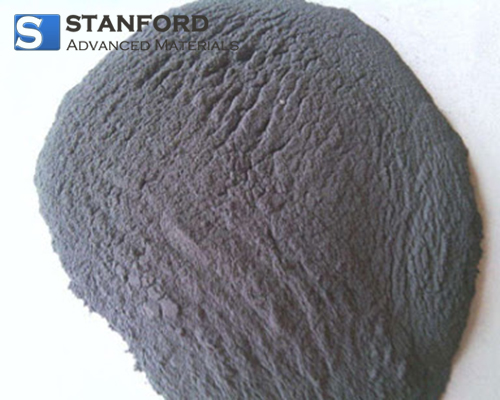
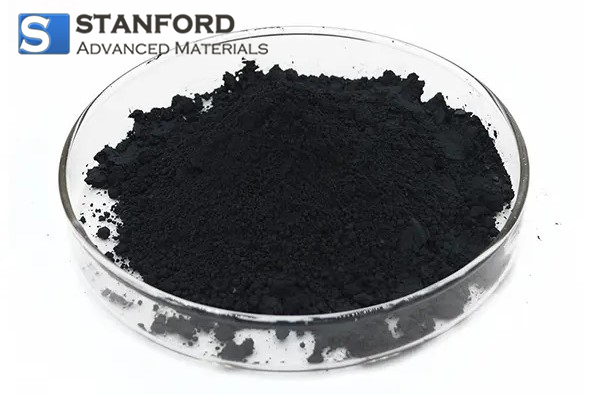
.jpg)
